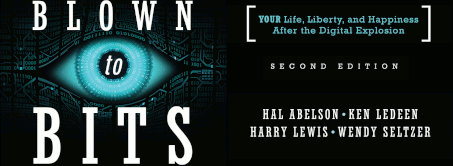End of the Internet?
Sunday, June 8th, 2008 by Harry LewisThis site claims to have inside information from Internet Service Providers (ISPs) that they are planning to go to the Cable TV model for the Web — basic service buys access to a list of web sites they stipulate, but if you want to wander off that territory, you’d have to pay them extra. $19.95 to get to Google, say, but $29.95 if you want access the New York Times web site (for which the New York Times itself charges nothing). That would be the end of the Internet as we know it, where anyone can put information up on a site and anyone else, for nothing more than their base ISP connection fee, can go see it.
“Net neutrality” is an important basic principle. I like to think of Internet connectivity as the US thought about rural electrification in the last century — something that might not be cost-efficient for private providers in the short run, but would yield enormous social and economic benefits to the US in the long run. If this report is true, imagine a world in which the electric company might supply you with electricity so you could run stoves and refrigerators on its approved list, but would charge you extra if you plugged in an appliance not approved by the electric company itself.
This is a complicated topic, but the fundamental problem is that there are not enough competing suppliers of Internet services. A quarter of the US still has only dialup; half has two suppliers, usually cable and telephone DSL; and a quarter has only one. The percentage of US households that have more than two choices for broadband connectivity is negligible. Under such conditions, the suppliers can contemplate tiered pricing schemes, which make absolutely no sense in terms of resources required — it costs no more to deliver packets from a billion different sources than from only one.
